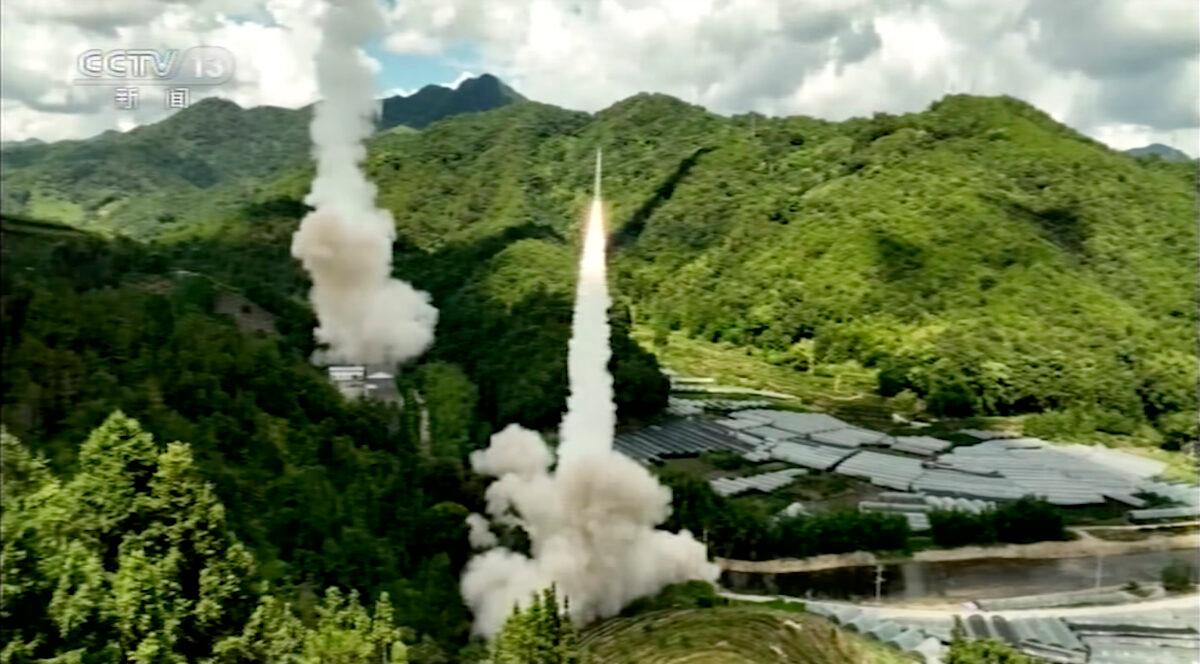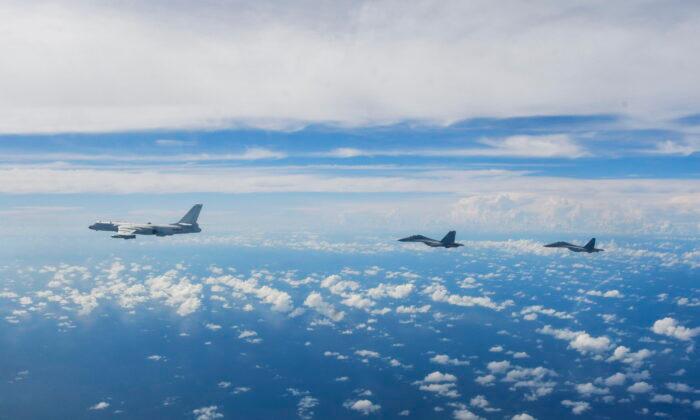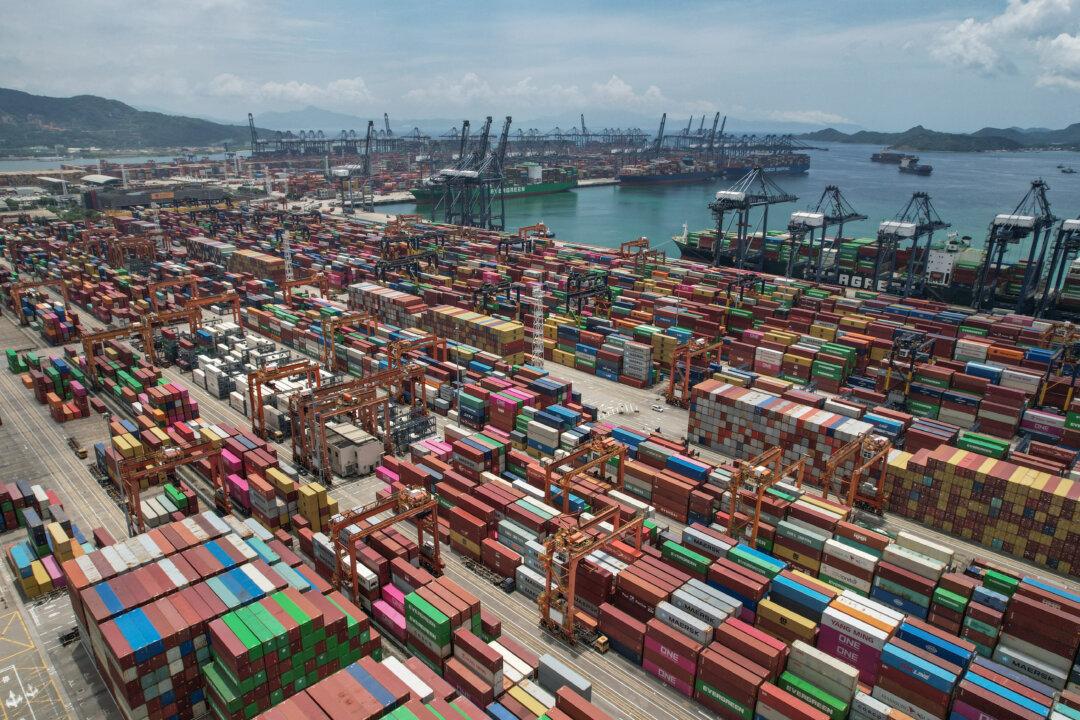Commentary
Military fallout from U.S. House Speaker Nancy Pelosi’s Taiwan visit is stretching from Beijing to Taipei and Tokyo to Washington.
Remarking on her recent visit to Taipei, Pelosi vowed that China would not be able to isolate Taiwan. She also defied the Chinese Communist Party (CCP), saying that Beijing does not get to dictate who can and cannot visit the island nation and that Beijing does not make the U.S. government’s travel schedule.
The CCP’s reaction to Pelosi’s visit was to hold several days of live-fire exercises and large-scale military drills—a show of force meant to intimidate Taiwan and its allies. The People’s Liberation Army (PLA) violated Taiwan’s sea space by crossing the median line in the Taiwan Strait. They fired missiles and sent more than 200 military aircraft and over 50 warships to the region.
In a press statement, the PLA Navy said it focused on anti-submarine combat and sea assaults. The PLA is training for submarine warfare because Taiwan’s defense is heavily dependent on the coordination of submarine fleets between the United States, Taiwan, Japan, and Australia.
In the drills, PLA forces simulated attacking Taiwan from six sides. Chinese state-run broadcaster CCTV announced on Aug. 7 that the PLA would now be running regular training missions on the opposite side of the Taiwan Strait.
In addition to a display of military firepower, Beijing announced eight countermeasures in retaliation for Pelosi’s visit, including the cancellation of bilateral climate talks with Washington and three military-to-military dialogue mechanisms. These talks were considered essential to maintaining peace in the region by preventing an inadvertent escalation of tensions. Now that tensions are higher than they have been in decades, communication is even more crucial. Canceling the talks seems to be an act of escalation in itself.
Japan, whose territory lies only 100 miles from Taiwan, has increasingly expressed that a threat to Taiwan is also a threat to its national security. Japanese Prime Minister Fumio Kishida condemned the PLA exercises. On Aug. 5, he told the press, “I have informed Speaker Pelosi that the fact China’s ballistic missiles had landed near Japanese waters, including the EEZ (Exclusive economic zone of Japan ), threatens our national safety and security.”

A missile is launched from an unspecified location in China on Aug. 4, 2022. The Chinese military fired missiles into waters near Taiwan as part of its planned exercises on Aug. 4. CCTV via AP
Even before Pelosi’s visit, Taiwan’s defense forces were on high alert. Afterward, the Executive Yuan released a statement in which Taiwanese Premier Su Tseng-chang said China is an “evil neighbor” and “flexing its muscles on our doorstep.”
President Tsai Ing-wen’s response has been to say that Taiwan would remain rational and calm while calling Beijing’s actions an “unprecedented threat.”
Beijing’s aggression is strengthening cooperation between allies such as Japan, Taiwan, India, and Australia, a country that condemned China’s most recent intimidation of Taiwan. Beijing has already established an aircraft identification zone over the Japanese territory of the Senkaku Islands. Although the United States does not have an official opinion on whether the disputed islands should belong to China or Japan, the United States is bound under the U.S.-Japan Security Treaty to defend territory currently controlled by Japan.
Similarly, China has threatened Indian territory in the Himalayas. The United States and India are now holding joint military operations just 60 miles from where Indian and Chinese troops clashed in 2020.
The official position of the United States has been the “one-China” policy, meaning that the United States makes no adjudication and has no opinion about whether or not Taiwan is part of China. Under the U.S. Taiwan Relations Act, the status of Taiwan must be negotiated peacefully and bilaterally between Beijing and Taipei. However, the United States is committed to selling weapons to Taiwan for the defense of the island nation. President Joe Biden claimed that Pelosi’s visit did not signal a change in the U.S. position. While the United States has maintained “strategic ambiguity” over the status of Taiwan, the position seems to be increasingly less ambiguous under the Biden administration.
On May 23, after a conference with Kishida, Biden said he would use force to defend Taiwan. On June 1, Defense Secretary Lloyd Austin said that the United States is willing to expand weapons sales to Taiwan.
At the same time that the U.S. position on Taiwan appears to be shifting toward independence, the Taiwanese themselves are moving further away from Beijing. According to a survey cited by Taiwan’s Mainland Affairs Council, 90 percent of respondents opposed China’s diplomatic suppression of Taiwan.
Views expressed in this article are opinions of the author and do not necessarily reflect the views of The Epoch Times.





